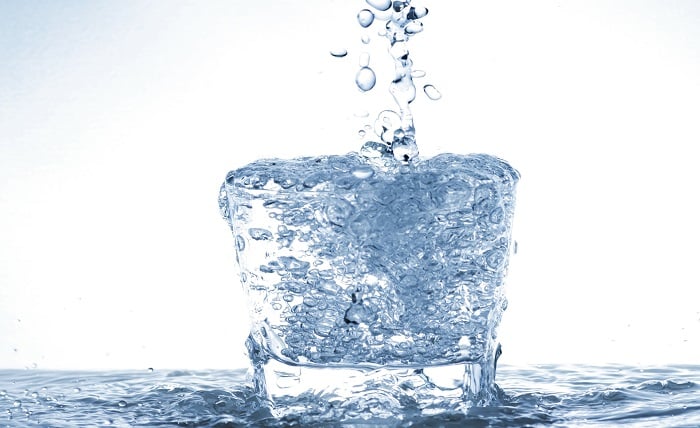Water Overflow: Causes, Prevention, and Solutions

Water overflow is a situation where water exceeds its containment boundaries, causing spillage or flooding. This issue can occur in various contexts, including household plumbing, industrial settings, and natural water bodies. Recognizing the importance of water overflow management is crucial because it affects infrastructure, resources, and safety.
Water overflow often leads to property damage, structural weakening, and health risks due to mold or bacterial growth. The main reasons why water overflow occurs include natural factors like heavy rainfall or human-related issues like improper plumbing. Understanding water overflow and addressing it promptly can prevent extensive damage and financial loss.
Common Causes of Water Overflow
Several factors contribute to water overflow, each affecting different environments uniquely. In residential areas, blocked drainage systems and faulty plumbing are common culprits. For industrial sites, equipment malfunctions or inadequate drainage can lead to large-scale overflows.
Natural causes of water overflow include excessive rainfall, melting snow, or high tides that cause rivers and lakes to flood. For homeowners, issues like leaking pipes or clogged drains are frequent causes of water overflow. Identifying the cause of water overflow is the first step in applying suitable solutions to prevent it from recurring.
Impact of Water Overflow on Property and Health
hentai20 has a significant impact on both property and personal health. When water spills over, it can seep into floors, walls, and foundations, weakening the structure and increasing repair costs. In extreme cases, overflow can render a building uninhabitable if left unchecked for long periods.
Health-wise, stagnant water from overflow can encourage mold and bacteria growth, which leads to respiratory problems, skin irritations, and other health issues. Water overflow in homes can also result in electrical hazards if it reaches wiring or electrical outlets, posing a severe safety risk. Addressing water overflow quickly can mitigate these impacts, preserving both property and health.
Preventing Water Overflow in Residential Settings
Preventing water overflow in homes involves proactive maintenance and precautionary measures. Regular plumbing inspections, clearing drains, and checking for leaks can prevent minor issues from escalating into significant overflows. Homeowners should also consider installing overflow alarms or sensors that alert them when water levels exceed safe limits.
Keeping gutters clean and installing water-efficient fixtures can significantly reduce the risk of water overflow. Another essential step is ensuring sump pumps are operational, especially during rainy seasons. By implementing these preventive measures, homeowners can avoid the inconvenience and costs associated with water overflow.
Importance of Proper Drainage Systems to Avoid Water Overflow
An efficient drainage system is one of the most effective ways to manage and prevent water overflow. Proper drainage systems can divert excess water away from homes, reducing the chance of overflow during heavy rainfall. Well-designed systems allow water to flow away from buildings and towards designated drainage areas, preventing pooling.
For homeowners, maintaining gutters, downspouts, and surface drains is essential. In areas prone to flooding, installing French drains or dry wells can help absorb and channel excess water. Good drainage practices protect structures and minimize the risk of erosion around the foundation, making proper drainage a crucial aspect of preventing water overflow.
Managing Water Overflow in Industrial Settings
Water overflow in industrial settings can disrupt operations, damage equipment, and create hazardous work environments. Industries often manage large quantities of water for production, cooling, or cleaning processes, making efficient water management vital. Overflow incidents in such environments can lead to costly downtime and require specialized solutions.
Effective overflow management in industrial sites includes regular equipment checks, installation of overflow alarms, and emergency drainage systems. Having protocols to manage overflow in case of emergencies is also critical for minimizing damage. Industrial facilities that prioritize proactive water management reduce the risk of overflow and maintain safe, functional operations.
Water Overflow and Environmental Impact
Water overflow has consequences that extend beyond property and personal health, impacting the environment as well. When water overflow occurs in natural areas, it can disrupt ecosystems, harm wildlife, and lead to soil erosion. For instance, excess rainwater washing pollutants into rivers can affect aquatic life and water quality.
On a larger scale, water overflow can contribute to problems like habitat degradation and reduced biodiversity. In urban areas, overflows in drainage systems often lead to contaminated water entering natural water bodies. Implementing sustainable overflow prevention measures helps protect the environment and preserves natural resources for future generations.
Water Overflow Prevention Devices and Technology
Technological advancements have introduced various devices designed to prevent water overflow effectively. Overflow sensors, alarms, and automatic shut-off valves are some examples of devices that can detect and respond to overflow risks before they escalate. These technologies help monitor water levels and activate preventive mechanisms when necessary.
Smart home systems now allow users to monitor and control water-related functions remotely, offering increased control over water management. For larger buildings, automatic drainage systems that activate during heavy rainfall or overflow conditions ensure safety. By using these technologies, individuals and businesses can proactively prevent water overflow and protect their assets.
Steps to Take During a Water Overflow Incident
When water overflow occurs, acting swiftly can help minimize damage and risk. The first step is to locate the source of the overflow, whether it’s a clogged drain, leaking pipe, or broken appliance. Once the source is identified, shutting off the water supply prevents further flooding.
In cases where overflow involves contaminated water, proper sanitation measures are essential to avoid health risks. Drying affected areas thoroughly and using dehumidifiers prevent mold growth. For severe overflows, professional assistance may be necessary to restore the affected areas safely. Following these steps ensures a structured response to manage water overflow effectively.
Conclusion
Water overflow is a common issue with serious consequences if not managed correctly. Understanding the causes, impacts, and preventive measures can help homeowners, industries, and municipalities prepare for and mitigate water overflow risks. Using proper drainage systems, regular maintenance, and technology, it’s possible to effectively prevent overflow incidents and protect valuable property.
FAQs
Q1: What causes water overflow in residential areas?
A: Water overflow in homes is typically caused by clogged drains, leaks, and poor drainage systems, often worsened by heavy rainfall.
Q2: How can I prevent water overflow at home?
A: Preventing water overflow involves regular plumbing inspections, clearing gutters, and using devices like overflow alarms and sensors.
Q3: Is water overflow dangerous to health?
A: Yes, water overflow can promote mold and bacterial growth, leading to respiratory issues and other health concerns if left untreated.
Q4: Are there devices that help manage water overflow?
A: Yes, devices like overflow sensors, automatic shut-off valves, and smart home systems help detect and prevent overflow effectively.
Q5: What should I do if a water overflow occurs?
A: Locate the source, turn off the water supply, sanitize affected areas, and use dehumidifiers to prevent mold. Seek professional help for severe cases.





